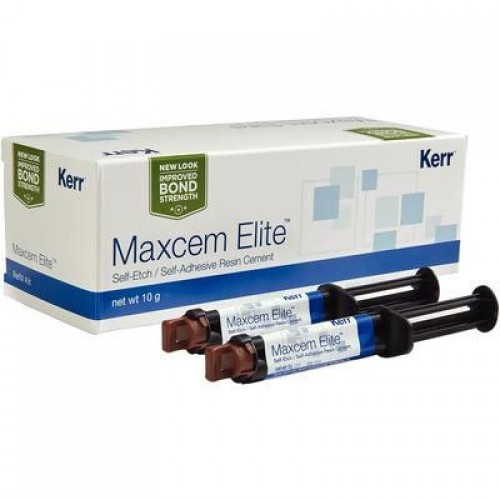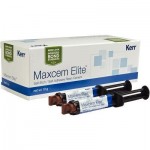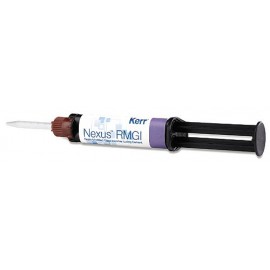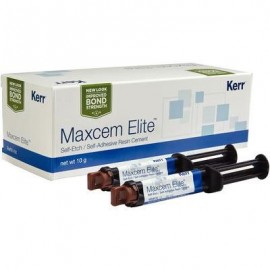Kerr Nexus Rmgi Kit (Pack of 1)
For fast ORDERING experience Visit our new site  www.medicabasket.com
www.medicabasket.com
NOTE: Due to volatility in dental market, Price and stock shown here are tentative and needed approval of supplier, Although we update frequently. Our Team will your order soon.
COD is not available now.
Call/ WhatsApp on +91-9313922999 / +91-9810283698

- Information
-
Dental Brands
- 3M Espe
- 3M Unitek
- A.J. Wilcock
- Agfa
- American Orthodontics
- Ammdent
- Anabond
- Angelus
- API Ashoosons
- API Instruments
- Apple Dental
- Being Foshan
- Bestodent
- Bien Air
- BIOLASE
- Blossom
- Bombay Dental
- Capri
- Captain Ortho
- Cerkamed
- Colgate
- Coltene Whaledent
- Confident
- D-Tech
- Danville
- Denext
- Dental Books
- Dental-Avenue
- Dentaurum
- Dentium
- Dentsply
- Desires ortho
- Detax Dental
- Diadent
- Dispodent
- DMG
- DPI
- Durr Dental
- Eighteeth
- Eltee Instruments
- Endoking
- Euronda S.P.A
- Fgm
- Fuji film
- G&H
- GC
- Gen-XT Implant
- Gendex
- Genoray
- Green Guava
- Hahnenkratt
- Heraeus Kulzer
- Horico
- Hu-Friedy
- ICPA
- Ids Denmed
- IMDSL Laser
- Itena
- Ivoclar Vivadent
- J Morita
- Jota
- Kalabhai
- Kavo
- Kerr
- Kodak
- Labomed
- Leone
- Libral
- Life Steriware
- Maarc
- Mani
- Marathon
- MDC
- Medicept
- Meta
- Modern ortho
- Moriz
- Navadha
- Neelkanth
- NeoEndo
- Novabone
- NSK
- Oracura
- Orateek
- Orchestrate O3D Aligner
- Ormco
- Oro
- Ortho Classic
- Ortho Organizers
- Ortho Technology
- Orthocare
- Orthosource
- Premier
- Prevest
- Prima Dental
- Pulpdent
- Pyrax Dental
- Rabbit Force Ortho
- Rejove 32Watts Aligners
- RS Dental Chair
- Ruby Dental
- Ruthinium
- Saeshin
- Samit
- Scheu
- SDI
- Septodont
- Shivam Dental
- Shofu
- SK Surgicals
- Skydent
- SS-White
- Strong
- Sun Medical
- Sure Endo
- Surgiwear
- Tokuyama
- TP Orthodontics
- Unicorn
- Unident
- Unique
- Vatech
- VDW
- VeeCare
- Vita
- Voco
- VRN
- W&H
- Waldent Equipment
- Waldent Instruments
- Waldent Material
- Woodpecker
- Zhermack
- Zoom
- Triodent
- Other brands
- Offers & Combos
- Contact Us
-
Product Category
- Composites & Restoratives
- Dental Education
-
Dental Equipment
- Air-Motor
- Apex Locators
- Autoclaves & Sterilizers
- Dental Air Compressor
- Dental Chair
- Dental Chair Accessories
- Dental Handpiece
- Dental Laser
- Dental Loupes
- Dental Surgery
- Endo Motor
- Handpiece Cartridge
- Implant Motors
- Intraoral Camera
- LED Light Cure
- Micromotors
- Microscope
- Radiology
- Suction Units
- Ultrasonic Scalers
- UV Chamber
- Dental Lab
- Endodontics
- Implantology
- Instruments And Burs
- New Clinic Setup Kits
- Oral Surgery
- Paedodontics
- Periodontics
- Prosthodontics
- Sterilization & COVID-19 Supplies
- General Dentistry
-
Ortho Store
- Arch Wires & Springs
- Bonding Adhesives
- Elastomerics
- Expansion Screws
- Headgear accessories
- Laboratory Products
- Mini TAD Screw
- Molar Bands and Tubes
- Ortho Attachments
- Photographic Accessories
- Weldable Accessories
- Braces or Brackets
- Clear Aligners
- Orthodontic Appliances
- Orthodontic IPR solutions
- Orthodontic Instruments
- Find Your Dentist
- Medica Basket
Your shopping cart is empty!
Resin-Modified Glass Ionomer Luting Cement
Only Kerr Nexus RMGI combines One-Peel cleanup, tack cure capability, and outstanding bond strength for consistent predictable outcomes.
As the first RMGI available with advanced Nexus™ Technology, Nexus RMGI provides an optimal gel state and 2–3 second tack cure capability to ensure easier cleanup each and every time. The unique self-adhering paste/paste system delivers outstanding bond strength to tooth structures and common substrates—significantly higher than with other RMGI products.* Delivered in a convenient automix syringe, Nexus RMGI is the cement of choice for exceptional results.
Nexus Technology’s advanced initiator systems (redox and photo) enable an optimal gel state and tack cure capability where One Peel excess cement removal is possible after waiting for gel state or tack-curing
What are the key advantages Nexus RMGI offers the dentist?
- Nexus RMGI is the new resin modified glass ionomer (RMGI) luting cement with:
- Best cleanup for an RMGI Consistent gel-set times Optimal gel state window
- Optional tack-curing Highest bond strengths for an RMGI:
- Dual-adhesive system 50-80% greater than market leader for metal and zirconia crowns
- Exceptional performance and physical properties Flexural and compressive strengths are 50% higher than those of leading competitor Ultra low film thickness (<10µ) Increased radiopacity (217% Al)
FEATURES:
- Outstanding durability
- Self-adhesive paste/paste dual adhesive technology delivers significantly higher bond, compressive and flexural strengths which provide improved durability and marginal integrity
- Improved esthetics
- BPO-free and Amine-free chemistry combines for optimum translucency with exceptional color stability
- Expect exceptional product performance
Through an exclusive combination of premium features, Nexus RMGI additionally provides:
- Ultra-low film thickness to ensure excellent marginal fit
- Increased radiopacity (217% Al)
- Sustained fluoride release
KEY SPECIFICATIONS:
FAQ'S
What is Nexus RMGI?
- Nexus™ RMGI is a radiopaque resin-modified glass ionomer luting cement
How is Nexus RMGI delivered?
- Nexus RMGI is offered in a paste/paste formulation and is packaged in dual barrel syringes with single-use regular automix tips. Wide automix tips are available for purchase in a package of 8 and additional regular automix tips are available in a package of 50. 35640 Kit 35650 Automix Wide Tips 33361 Automix Regular Tips
Is it only self-cure?
- No, this a dual-cure material. You can let the material self-cure or tack-cure prior to removing excess cement.
Is Nexus RMGI indicated for all types of restorations?
- No. Nexus™ RMGI is intended for use as a permanent dental cement. It is indicated for the following indirect restorations: Cementation of metal-based inlays, onlays, crowns and bridges Cementation of resin inlays, onlays, crowns and bridges Cementation of all ceramic inlays Cementation of high strength (zirconia based) all ceramic crowns and bridges Cementation of metal, ceramic and fiber posts
Are there any contraindications?
- Yes. Nexus RMGI is contraindicated for pulp capping. In addition, this product is not to be used on veneers or all ceramic/porcelain crowns and onlays. In rare cases, the product may cause sensitivity in some people. If any such reactions are experienced, discontinue the use of the product and refer to a physician.
Can the automix tips be used on multiple patients?
- No. Automix tips are for single patient use only, to prevent cross-contamination between patients.
When can I remove excess cement?
- When the restoration is properly seated, remove excess cement. Excess cement is best removed in its gel state with a scaler or explorer. Gel state can be achieved by tack-curing excess with a light for approximately 2-3 seconds, or by allowing the cement to self-cure until it feels rubbery.
What is the set time?
- Set time is less than 4’30” at oral temperature. These times may vary based on storage conditions, temperature, humidity, and age of product.
What temperature do I need to use this product at?
- This product is designed to be used at room temperature.
- Yes. If stored in a cooler, allow the product to reach room temperature prior to use.
Are there any detrimental effects to storing the product at high temperatures?
- Ambient temperatures greater than 25°C (77°F) may reduce shelf life.
Do I have to cap syringe after use?
- Yes. Do not allow the pastes to dry out. Store with cap securely attached to the syringe. Leaving a used mixing tip on the syringe as a cap until the next application may result in evaporation and drying of the paste (not recommended).
Can this product have adverse effects on the patient?
- Yes, uncured methacrylate resin may cause contact dermatitis and damage the pulp for some patients. Avoid contact with skin, eyes and soft tissue. Wash thoroughly with water after contact. Get medical attention for eyes. Do not take internally.
What makes Nexus RMGI adhere better to dentin, enamel and substrates than leading RMGIs?
- Nexus RMGI utilizes a unique dual adhesive system to achieve enhanced bond strength to tooth structure (dentin/enamel) and other dental substrates.
How soon can I light-cure Nexus RMGI to hasten its gel state?
- You can light-cure (1-2 seconds) Nexus RMGI immediately after placement to hasten gel state or you can also allow Nexus RMGI to self-cure (minimum of 1.5’) to reach its gel state.
DIRECTIONS TO USE :
- Prepare tooth in usual manner.
- For pulp capping use calcium hydroxide or other suitable pulp capping material. Remove provisional restoration.
- Clean the preparation with pumice and water. Rinse thoroughly with water. Air dry preparation (do not desiccate).
- The preparation or cavity should be just dry enough that the surface has a slightly glossy appearance. Over drying can lead to post-operative sensitivity.
- Try in restoration to ensure proper fit. Adjust if needed. Thoroughly clean the bonding surfaces of the restoration.
- Remove the syringe from the foil pouch. Note the date the syringe was removed on the syringe label.
- Remove the sealing cap from the syringe. Check the syringe openings for blockage; remove any paste plugs. Before the first use or after a long interval between uses, squeeze out a small quantity of paste onto a pad to equalize the base and catalyst paste in the syringe.
- Discard the paste which has been squeezed out. Attach a new mixing tip and secure it by turning it to the right. Squeeze out and discard a peppercorn-size quantity until an evenly mixed paste in a homogenous color flows out of the tip.
- The paste requires a certain amount of time to flow through the mixing tip.
- The flow through speed cannot be accelerated by increasing the pressure on the plunger. As soon as the pressure on the plunger decreases, the material flow stops and the paste begins to set up.
- Do not use force to press out paste that has set as this could cause damage to the mixing tip and the syringe.
- Dispensing of the material can be done as follows:
- Inlay/Onlay – Dispense the cement directly into the cavity preparation covering all surfaces. Seat the restoration gently onto the tooth prep, allowing the cement to flow from all sides.
- Crown – Dispense the cement directly into the restoration, covering all surfaces. Seat the restoration gently onto the tooth prep, allowing the cement to flow from all margins. Post – Prepare the post space. Size and fit the post.
- Dispense the cement onto the post or directly into the canal space.
- Seat the post and vibrate slightly to avoid trapped air. Allow the cement to slowly flow from the canal space. When the restoration is properly seated, remove excess cement. Excess cement is best removed in its gel state with a scaler or explorer.
- Gel state can be achieved by tack-curing excess with a light for approximately 2-3 seconds, or by allowing the cement to self-cure for approximately 2’-2’30” after application.
- Finish the restoration and check occlusion when material has completely set.
- Material should completely set within 4’30” after placement in the mouth. Remove the used mixing tip and replace it with the sealing cap. Do not leave the used mixing tip on the syringe for a long period of time.
- When only a small amount of paste remains in the syringe, the paste may not be dispensed from the mixing tip.
PACKAGING:
- 1 x 5 gm Syringe






